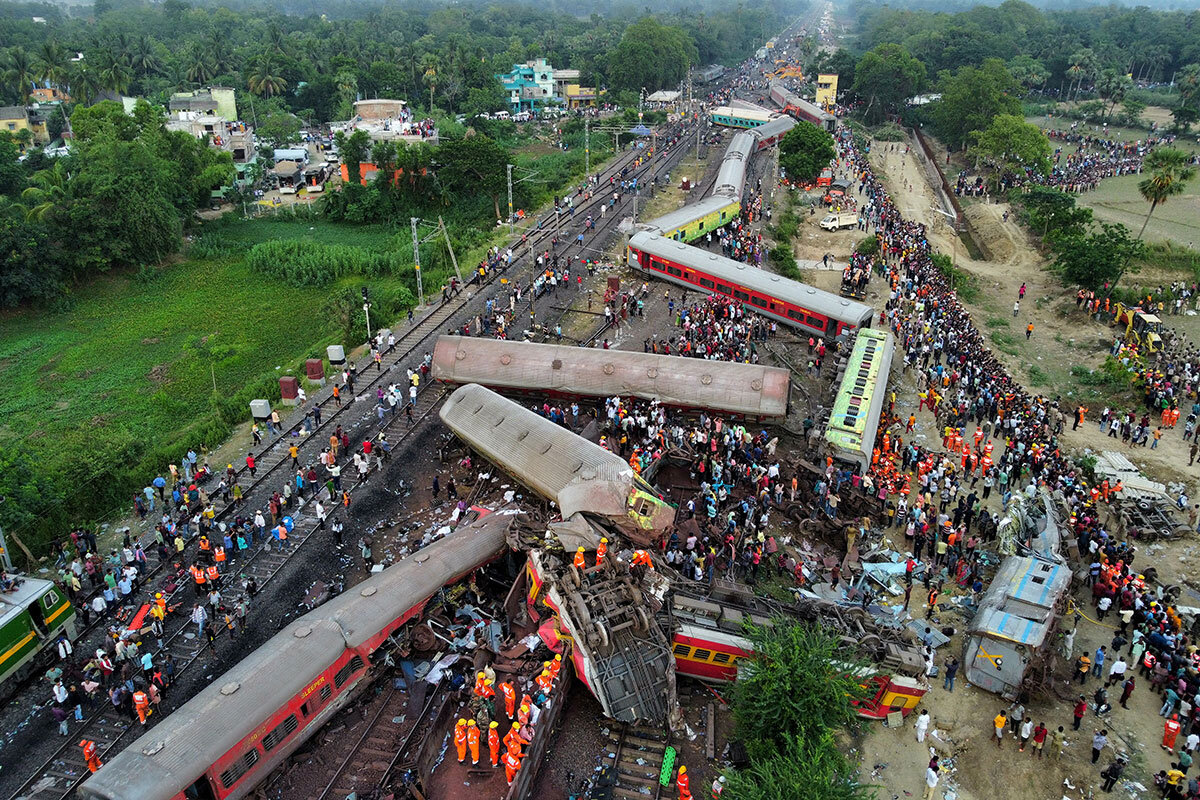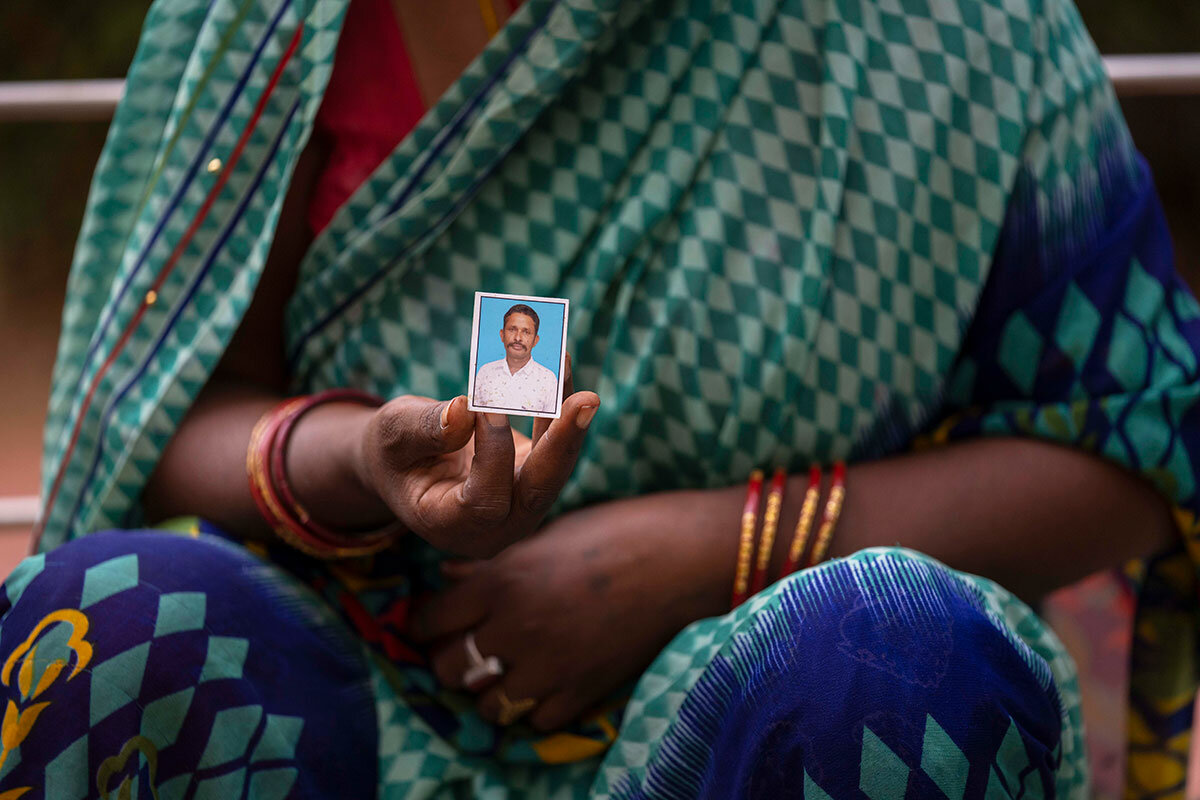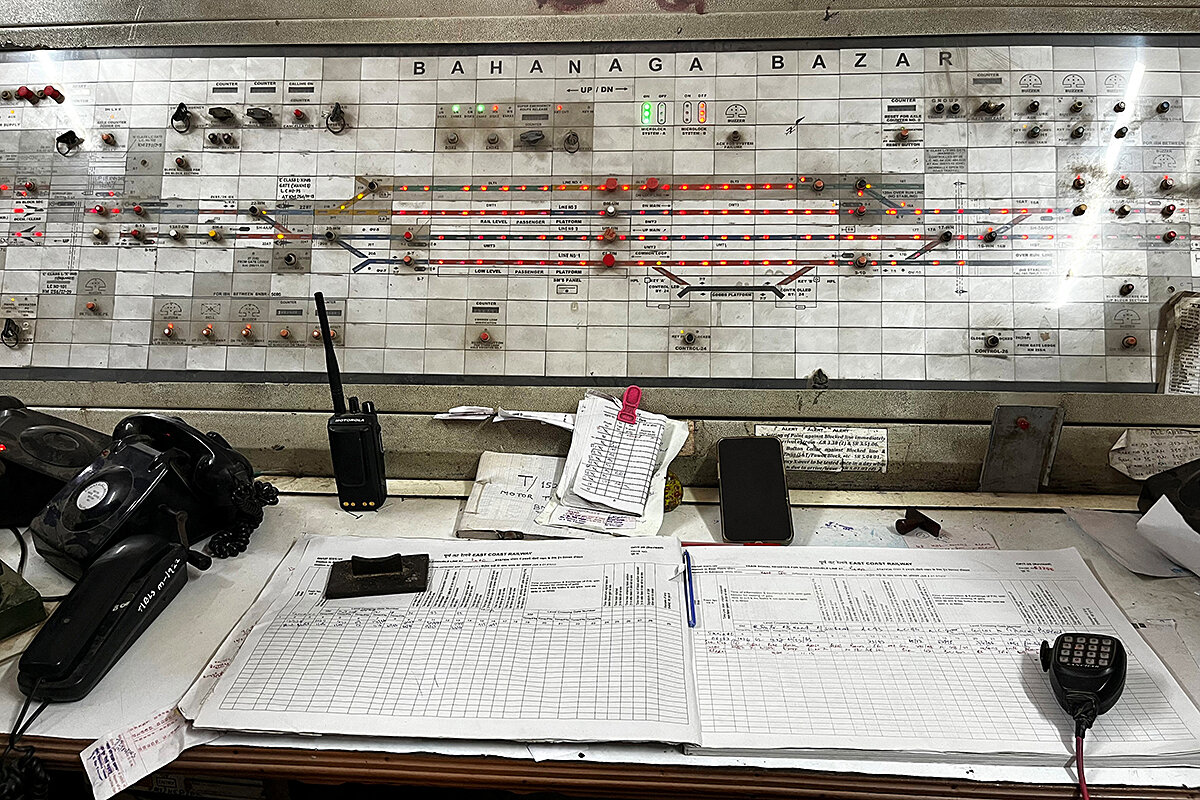Why India lags behind in rail safety ‚Äď and where it goes from here
Loading...
| GURUGRAM, INDIA
It’s been a week since the east Indian state of Odisha witnessed one of the worst rail accidents in the nation’s history. Rescue crews have gone home and train services have resumed, but the country is still reeling. 
As the shock wears off, attention has shifted to safety standards in the state-run Indian Railways, which ferries millions of people every day. Many opposition leaders have called for the resignation of India’s railways minister, Ashwini Vaishnaw.
The accident is also humbling for the much-touted rail modernization drive by the administration of Prime Minister Narendra Modi. In recent years, the government has built high-altitude bridges, inaugurated state-of-the-art stations, and even announced India‚Äôs first bullet train. But Alok Kumar Verma, who retired from the Indian Railways Service of Engineers in 2016, calls these projects ‚Äúsheer propaganda.‚ÄĚ In reality, he says, the railway network is being neglected, with disastrous consequences.
Why We Wrote This
Leaders in India have been pouring money into modernizing the country’s massive rail system. But as a recent accident in Odisha shows, modern doesn’t always equal safe.
What went wrong in Odisha?
Last Friday, near Bahanaga Bazar station in Odisha’s Balasore district, the Coromandel Express passenger train was routed onto the wrong track, causing it to collide with a parked freight train instead of passing it safely. The Coromandel Express hit the freight, which was carrying a heavy payload of iron ore, at 80 mph. The impact derailed many of the express train’s coaches, which then careened onto an adjacent line, hitting another passenger train that was heading in the opposite direction. 
The three-train pile-up killed nearly 300 people and injured about a thousand. Many victims’ bodies were damaged beyond recognition, and hospitals resorted to DNA tests to help relatives identify loved ones. 
Mr. Vaishnaw has said that ‚Äúa change in the electronic interlocking system‚ÄĚ used to guide train movement caused the accident, adding that details would be revealed only after a full investigation by the commissioner of railway safety. It‚Äôs not clear whether the accident resulted from human error, technical glitch, or sabotage. What is clear is that this is India‚Äôs most severe rail accident since two trains collided near Agra in 1995.¬†
Since then, India has improved rail safety. In 2020-21, there were¬†. Yet, in 2021, more than¬† people died in railway accidents. Globally, India still ‚Äúranks very low‚ÄĚ when it comes to rail safety, says Mr. Verma, adding that it‚Äôs comparable to lesser-developed countries like the Democratic Republic of Congo or Nigeria.¬†
Why does India have such a poor track record on rail safety?
According to Mr. Verma, the root cause is congestion. Ideally, tracks should be running at 70% capacity to factor in maintenance, he explains, but on some of the country’s busiest routes, they’re operating well beyond capacity. 
Running too many trains eats into the maintenance time, compromising safety. ‚ÄúWe don‚Äôt have the line capacity; our routes are highly choked,‚ÄĚ he says. ‚ÄúThis is a very alarming and worrying situation.‚ÄĚ
Another issue is overcrowding. Samir Zaveri, a rail safety activist in Mumbai, notes that general, non-air-conditioned coaches are often well over capacity, and it’s not uncommon for people to ride in train bathrooms. When there is an accident, crowded carriages mean more casualties. 
Still, rail accidents of Friday’s magnitude are rare, in India and elsewhere. The last one was in 2002 in Tanzania, in which 281 people died. India’s deadliest rail disaster happened in 1981, when a train fell into a river in the eastern state of Bihar, killing an estimated 750 passengers.
Yet Mr. Zaveri, who lost both his legs in a rail accident more than three decades ago, says all these accidents, regardless of size, stem from lax attitudes toward safety. In Mumbai, where he lives, deaths occur every day on the crowded suburban rail network. 
‚ÄúBut nobody bothers about it,‚ÄĚ he says. ‚ÄúThere is no value for human life in India.‚ÄĚ
How can India build safer railways?
India is already pouring money into revamping its railways¬†‚Äď capital expenditure last financial year was around . But experts say leaders have prioritized flashy projects over systemwide improvements.¬†
India has recently flagged off, for example, 18 new semi-high-speed trains that can go up to 110 mph. But due to poor track conditions, these trains are actually running at¬†. Mr. Zaveri compares it to driving a luxury car on a bad road. ‚ÄúWhat is the use?‚ÄĚ he says.
When it comes to modernizing India‚Äôs infrastructure, ‚Äúsafety should be part of the culture,‚ÄĚ says Subodh Jain, a former member of the Railway Board‚Äôs engineering department. He says that, whatever the investigation finds, the Odisha tragedy was at least in part due to a lack of vigilance. ‚ÄúBehind each such major accident, there must have been 300 incidences where you compromised with the safety rules and were able to get away with it,‚ÄĚ he says.¬†
Mr. Verma agrees. ‚ÄúThere has to be accountability,‚ÄĚ he says.
Instead of focusing on adding new trains, Mr. Verma wants the Indian Railways to upgrade existing track networks to remove bottlenecks, and also build new routes to reduce congestion. In Mumbai, Mr. Zaveri has lobbied for emergency medical assistance at every station so that victims can get help immediately. 
Mr. Verma laments that the railway has been left behind even as airports and highways in India see explosive growth. For long journeys, the rail system is the only affordable option for millions of Indians, especially poor migrant workers like many of those who died in Friday‚Äôs accident. ‚ÄúIt is the lifeline of the nation,‚ÄĚ says Mr. Verma.







